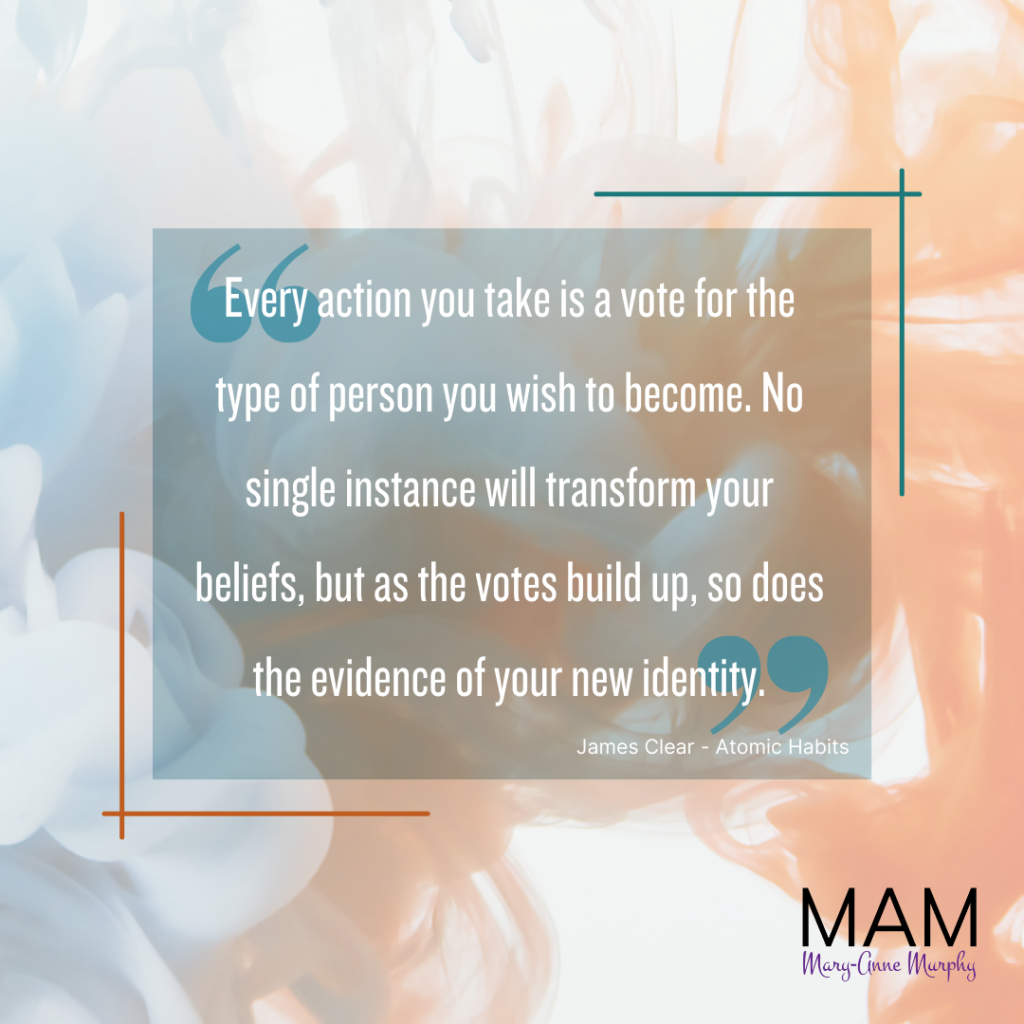
Every minute of every day we get to choose who we are, how we are and what we stand for. It begins the moment we open our eyes. Do we choose gratitude, or do we choose pessimism? When we enter a room, what is our face and body language saying about us? When we do our mahi, is it done with dread or delight?
Don’t get me wrong, stuff can hit the fan which can challenge even the most optimistic of souls; goodness knows, I’ve had my fair share of this. Our brains are primed to perceive the negative first. Our core response is that we are under threat; do we fight our way through it, or do we flee? For us to perceive anything else requires a conscious effort to respond against our own DNA. For those people who haven’t experienced major trauma in their early life, or have a mental illness that may impede them, we actually have the ability to change our thinking, but it does take conscious effort.
As James Clear states, a shift in our thinking and behaviour doesn’t just happen overnight, it is made up of tiny decisions every minute of every day. For me, when I feel myself dipping into fight or flight mode I will create a tiny bit of space so I can recalibrate internally. This may take the form of excusing myself to go to the bathroom (not constantly might I add), asking a question, rather than rapidly responding, or stating that I need to take some time to think about what has been tabled and rescheduling a time to continue the conversation. Over time I have developed strategies that bring me back to midline when I feel myself tipping.
Let’s also keep it real, sometimes I just pure and simply react, respond or flee. Sometimes it can take a bit of reflection to pinpoint the trigger for this, but I will always learn from it and will apologise for my reaction.
As humans and specifically as leaders, we are constantly interacting with people and having to recalibrate. This takes emotional agility; something we are not necessarily taught or modelled.
Someone shared a story of a leader who after being away on business-related work, would come back and review the work done in their absence. Their default was to look for what wasn’t done, or what wasn’t to their standard. This in turn created negativity and ruined the relationship with their colleagues.
Every minute of every day we have the choice as to how we want to show up, and it can take effort.
- First, become aware of when you are off-kilter: what’s happening to your breathing, your mental state, your body?
- Then reflect on and pinpoint your triggers: what, who or when do you get triggered?
- Look for the patterns of behaviour and decide which you want to change (one at a time).
- Consider strategies for how you wish to do things differently (some of mine may be helpful).
- Practice, practice, practice!
- Celebrate your wins and reflect on the whoopsies (and apologise if needed).
- Try a different strategy until you find one that works for you (an Emotional Intelligence coach such as myself can support you with this).
- Rinse and repeat. 🙂
As Rachel Hunter used to say in the Pantene ad (and James Clear says so professionally)…


